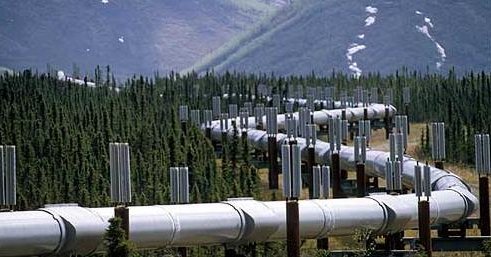Just as in 2006, Gazprom wanted to alter the gas delivery conditions for Ukraine. [1] As this country still buys its gas at a preferential price, and not at a price directed by world markets, [2] Gazprom’s claims didn’t seem excessive at first sight. Despite this rather plausible explanation, it’s difficult to turn a blind eye to the geopolitical implications these gas disputes have. Through its proxy Gazprom, Russia is aiming for destabilizing Ukraine. This former satellite country is now seen as a disrespectful partner in the eyes of Russia due to the events of the ‘Orange Revolution’. Gas offers Russia the possibility to take revenge for Ukraine’s ingratitude and strengthen the pro-Kremlin opposition. On the other hand, Ukraine tried to obtain the goodwill of the West, and more specifically the EU, by actions that finally caused Russia to cut gas transport to Europe completely.
The discussion about the events during the crisis isn’t the aim of this article. More important is the wake-up call the EU received by these incidents. Some member states suffered huge economic damage by the crisis and weren’t able to guarantee households a sufficient flow of electricity and gas, causing social tragedies. Russia lost its reputation as a reliable supplier of gas, especially since it serves political means, while Ukraine too doesn’t seem to be a trustworthy transit country anymore. Internally, the crisis exposed several shortcomings in the efforts of the EU to construct a common energy market. At the same time Europe became aware of its external vulnerability as well. The EU is therefore looking for solutions to its weaknesses by formulating and enhancing the necessary guidelines to finalize the internal energy market that will be able to tackle all of these issues.
The EU is looking for solutions to its weaknesses by formulating and enhancing the necessary guidelines to finalize the internal energy market.
Disputes between a supplier and a transit country aren’t the only major problem for the EU. A growing demand for energy resources in other regions of the world is another issue of concern. China, India and Russia are witnessing a higher demand for energy due to their economic development. Exploiting existing gas fields seems to produce problems as well. Because of diminishing gas reserves and reduced investments in technology and development of new gas fields, production can’t keep up with demand. Obsolete gas infrastructure is a further potential danger. A breakdown would cause considerable more damage than any delivery interruption could bring about.
So, what’s the story on Europe’s dependency on Russian gas? Is consumption in the EU really that bad diversified? Are the visions of a Russian stranglehold on the EU gas consumption overrated or justified? Should we fear the Russian bear as we once did during the Cold War? The story is more differentiated than it sometimes looks like. Of the EU-27 total energy consumption, natural gas accounts for 24%. Of this natural gas consumption, the EU-27 produces around 40% itself and imports 60% [3] of which Russian gas takes a share of 42%. Norway and Algeria follow with 24,2% and 18,2% respectively. Overall, import dependency on Russian gas doesn’t seem very problematic at first sight. However, a closer look shows that there exists a huge discrepancy, especially between Western and Eastern Europe. In the latter region some countries are fully dependent on Russian imports for their gas consumption. However, the share of natural gas in their total energy consumption differs significantly.
For Western Europe on the other hand, the story is completely different. Although overall import dependency remains high, except in the UK, The Netherlands and Denmark, there are some differences concerning the dependency on Russian gas. Moreover, the share of natural gas in total energy consumption varies again considerably. Finland, Austria, Germany, Italy and France form the top five when it involves the share of Russian gas in their total gas imports, while Russian gas imports in countries as Belgium, Spain, Portugal or the UK are negligible or non-existent. [4]
In the future, the EU’s import dependency will further rise, due to declining indigenous energy production. [5] Demand for energy will rise as well. According to data from the Commission, “with “business as usual” the EU’s energy import dependence will jump from 50% of total EU energy consumption today to 65% in 2030. Reliance on imports of gas is expected to increase from 57% to 84% by 2030, of oil from 82% to 93%”. [6] However, the policies and actions on energy efficiency should be taken into account. These should be able to keep a stable balance between higher demand and a diminishing supply. If the EU is able to act appropriately to these challenges, a higher import dependency doesn’t need to pose a threat, because enough substitutes will be available. These can offer an extra safe haven for future delivery problems. The adoption of the third package for further liberalizing the European energy market on 25 June 2009 is a sign that the EU is ready to take action in this field.


Follow the comments: |
|
